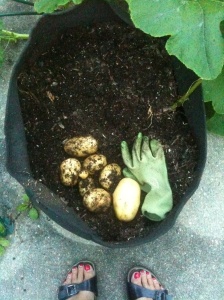Today we are talking about stormwater runoff and pollution because the cities around Mobile Bay suffer from litter and water pollution problems in a big way. Stormwater pollution is such a large issue because it is what we call “non-point source pollution.” This means that pollution comes from numerous discrete sources, making it difficult to quantify and difficult to eliminate. In addition to explaining what stormwater runoff is and what causes it, we will also share ways that you can make a difference stormwater-wise.
What is stormwater runoff?
Stormwater runoff occurs when rain from storms flows over the ground. Impervious (non-absorbant) surfaces like driveways, sidewalks, and streets prevent stormwater runoff from naturally soaking into the ground. Litter and contaminants that have been left on the ground are swept along with rainwater into our storm drains. Stormdrains direct rainwater to the nearest waterway; this water does not go to a treatment plants or pump station. Eventually, the pollution finds its way into our many waterways, Mobile Bay, and the Gulf of Mexico.
Simply put, stormwater runoff is important because it impacts our waterways and environments in many ways. Everything that lives in the water, feeds from the water, or drinks the water can be impacted by stormwater pollution. This adversely impacts our health, the environment, and our economy.
Problematic Pollutants
– Litter on roads and in parking lots and parks
– Cigarette butts
– Untreated wastewater from failed septic systems
– Oil and antifreeze from leaking cars
– Garden and lawn chemicals
– Household cleaners and chemicals that are disposed of improperly
– Construction site runoff
– Pet and livestock waste
– Mardi Gras parade debris
Who causes stormwater pollution?
We all do. Stormwater pollution is the result of industrial activity, our personal everyday actions, and our local land use policies. Fortunately, there are lots of things you can do to make a difference regarding our stormwater quality.
Some Things You Can Do
1. Pick up pet waste and deposit it in garbage cans, flush it down the toilet, or bury it in your yard.
2. Wash your car in the yard instead of the driveway, or go to a carwash that properly handles its wastewater.
3. Divert down spouts to grassy areas instead of driveways and sidewalks. May we also suggest a rain garden?
4. Use natural fertilizers on your lawn and garden only when necessary and always apply according to package instructions.
5. Don’t put anything down a storm drain – Remember, storm drains lead directly to our Bay!
6. Sweep sidewalks and driveways instead of hosing them down.
7. Use native plants in your garden – they require less watering and maintenance.
8. Help pick up litter and dispose of it properly.
9. Harvest rainwater for watering your plants through the use of a rain barrel.
10. Participate in clean-ups or stormwater education programs.
Great American Clean-Up
This week is the Great American Clean-Up, an effort of the part of Keep America Beautiful and countless other organizations to keep our communities and our environment clean and healthy. In Mobile, AL, you can participate in a clean-up event TOMORROW (Saturday, April 28th) from 8am-noon at the Springdale Mall on Airport Blvd. Join the Mobile Bay National Estuary Program, Partners for Environmental Progress, Keep Mobile Beautiful, Mobile Baykeeper, and others this Saturday to clean up the Dog River watershed. Meet at Burlington Coat Factory at the Springdale Mall. Register as a team or as individuals through HandsOn South Alabama or by calling Keep Mobile Beautiful at (251) 208-6029.



